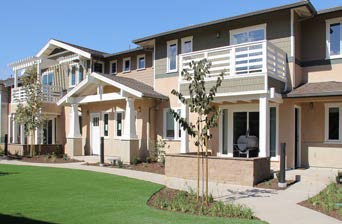Board Doubles Down on Failed Housing Policies

Cities and civic organizations across the county are holding sometimes contentious conversations about density, growth and the future of housing in Ventura County. However, some members of the Board of Supervisors appear increasingly married to the idea that little needs to change in the county unincorporated areas to solve the region’s dire housing crisis.
The Board majority appeared unwilling to make any significant changes to the county’s approach to housing in the unincorporated areas, particularly any land use changes that would require a county initiated SOAR vote. Supervisor Steve Bennett rejected that option out of hand, saying the issue “had been pretty firmly resolved by two SOAR votes.”
The discussion came during a joint meeting with the Board and the Ventura County Planning Commission on April 17 to discuss the Alternatives Report for the 2040 General Plan Update. The Alternatives Report is designed to evaluate land use alternatives in the county that would allow growth to comply with state housing mandates. Possible land use changes can include altering the allowable uses on parcels or rezoning land to accommodate new uses, such as rezoning parcels from commercial to residential.
County staff presented feedback from a series of focus group meetings and public open houses where community leaders, industry representatives, non-profit organizations and individual citizens offered their ideas on how to address the future housing and economic growth in the county.
The topic repeatedly brought up in the focus groups and by speakers at the April 17 meeting was the need to provide workforce housing, including farmworker housing, to relieve the housing crisis in the county. Another important topic was the need to help businesses in the unincorporated area by aiding the development of industries such as agriculture processing and manufacturing.
Yet when it came time for Board comments, the tone was decidedly negative. “We are trying to make sure that most of the economic development and urbanization takes place in the existing urban areas,” said Supervisor Bennett. “We are not going to solve the workforce housing crisis in Ventura County by how much workforce housing we build in the unincorporated area.”
“If I had to pick what we should focus on,” he continued, “if anything, it should be farmworker housing in the unincorporated area and additional dwelling units on existing developed properties, because that’s how you get the best chance of having that low-cost, affordable workforce housing.”
Yet the history of housing development in the county has shown those solutions to be woefully inadequate to meet the county’s housing needs. The county needs to build 1,015 dwelling units in the current 2014-2021 Regional Housing Needs Assessment (RHNA) cycle in order to meet their state-mandated housing goals. According to the 2017 Annual Report on RHNA goals, the County has built only 177 units, less than 18% of the RHNA goals.
Historically, the county has built very little in the way of Accessory Dwelling Units (ADUs). Since 2014, only 45 ADUs have been built in the county. This represents only 25% of all the housing built in the county unincorporated area since then and less than 5% of the County’s total housing needs.
Even with the changes to the state’s ADU laws, which expanded the ability of property owners to build ADUs, it is extremely unlikely that the county will meet its housing goals by relying on ADUs. Since the new state laws took effect in January of 2017, only 131 applications have been submitted to construct ADUs. While this is a significant increase from before the new laws were passed, even this surge in interest will be insufficient.
These new applications represent a little more than 8 units per month. The county will need to build over 17 units per month, every month, until 2021. In other words, even if every single ADU application is actually built, an extremely unlikely scenario, the number of ADU applications would need to double in order for the County to meet its RHNA goals.
The Board is likely aware of how inadequate ADUs are as a solution, which is why they spent a good portion of the April 17 meeting complaining about the population growth estimates for Ventura County put out by the Southern California Association of Governments (SCAG). The SCAG numbers are the basis for the RHNA housing goals, and both Supervisor Bennett and Supervisor Linda Parks hammered the SCAG numbers and demanded that they be revised downwards.
Some Board members appear ready to dig in their heels on housing and insist that no major changes to land use policy need to be contemplated. The ongoing housing crisis, the County’s repeated inability to reach its housing goals and the continuing economic recession in the county suggest otherwise.
CoLAB has proposed a number of ways to help ease the housing crisis while maintaining the county’s quality of life. For agricultural lands, we suggest rezoning land adjacent to state schools to reduce conflicts with pest control, streamlining farmworker housing approvals, allowing non-conforming agricultural parcels to have higher percentage lot coverages and promoting cluster development to consolidate facilities and encourage agricultural conservation. For existing communities, we propose area plan updates for some communities to allow for mixed use development and to increase maximum density to help provide more housing for our region.
Doing these things will require confronting the problems faced by the county head on, being willing to compromise and be flexible on land use policy, and display the political will to change course when it’s obvious that the current approach isn’t working.
Based on the comments at the April 17 meeting, some on the Board appear willing to keep pursuing the same failed approach.

